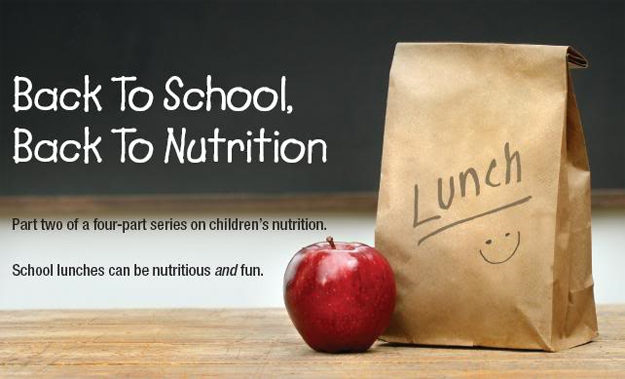We all know the best parts of the school day: recess, naptime and, of course, lunch! There are concerns, however, that lunchtime over the years might have become too much about fun and less about nutrition. However, the natural products industry is providing a way for little bodies to still have big fun and get big nutrition at the same time.
Childhood obesity and related health problems are still rampant in the United States and more people are starting to pay attention to what goes into those little tummies. The Nutrition Business Journal estimated $10.1 billion in consumer sales for the U.S. healthy kids market in 2008, confirming that the health of children is becoming a priority. With this in mind, and with school starting soon, retailers have some tremendous opportunities to teach kids—and parents—a lesson or two about nutrition.
Re-Learning Nutrition At School
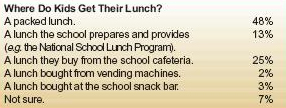 Because the current National School Lunch Program governs only food sold in the cafeteria during lunch hours, there is no accounting for what kids are eating from vending machines, bringing from home or sharing with friends. And, although school lunches must meet the 1995 Dietary Guidelines for Americans, decisions about which foods are served and how they are prepared are made by local school food authorities (1). In the space between these vague dietary expectations and what kids actually eat, there is too much room for kids to wander into a lifetime of unhealthy eating habits.
Because the current National School Lunch Program governs only food sold in the cafeteria during lunch hours, there is no accounting for what kids are eating from vending machines, bringing from home or sharing with friends. And, although school lunches must meet the 1995 Dietary Guidelines for Americans, decisions about which foods are served and how they are prepared are made by local school food authorities (1). In the space between these vague dietary expectations and what kids actually eat, there is too much room for kids to wander into a lifetime of unhealthy eating habits.
An online poll by Vincent Iannelli, M.D., analyzes where kids are getting their lunches everyday (2), shown above. With close to 50% bringing lunch to school, there is ample opportunity for retailers to advise parents how to pack healthier lunches and offer products to meet those needs. Retailers can even make partnerships with schools to provide foods for healthier snack bars and vending machines for those who don’t bring food from home or eat in the cafeteria. Also, increasing awareness and focusing on health and nutrition will surely drive traffic to retail stores.
As for that 7% of rogue grade-schoolers getting their lunches from unknown origins, we can do our best to try to educate them (but mostly their parents) about good nutrition.
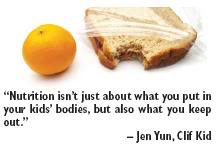 But, school officials also need a bit of a review about the healthy aspects of different foods. A study published in the Journal of Child Nutrition & Management found that food service directors of urban, suburban and rural school districts had difficulty defining what constitutes a whole grain product (3). Certainly, it is more difficult for children to learn when they are unable to even ask knowledgeable adults about making better choices. “No matter what age—tot to teen—children need to learn how to eat healthy and balanced to sustain good eating habits for life,” says Matthew Brennan, quality control director for Robert’s American Gourmet Food, LLC, Sea Cliff, NY. “Children should also be taught how to read nutritional labels and to look out for red flags,” he adds.
But, school officials also need a bit of a review about the healthy aspects of different foods. A study published in the Journal of Child Nutrition & Management found that food service directors of urban, suburban and rural school districts had difficulty defining what constitutes a whole grain product (3). Certainly, it is more difficult for children to learn when they are unable to even ask knowledgeable adults about making better choices. “No matter what age—tot to teen—children need to learn how to eat healthy and balanced to sustain good eating habits for life,” says Matthew Brennan, quality control director for Robert’s American Gourmet Food, LLC, Sea Cliff, NY. “Children should also be taught how to read nutritional labels and to look out for red flags,” he adds.
In an attempt to recharge school lunch programs, Representative Lynn Woolsey, a California Democrat, introduced The Child Nutrition Promotion and School Lunch Protection Act (H.R. 1324) in March, legislation that would update national school nutrition standards. Also, Senator Tom Harkin, a Democrat from Iowa, has introduced a similar bill (S. 934) to the Senate that would allow the Secretary of Agriculture to regulate foods sold throughout school campuses during all school hours. In the meantime, retailers can take the initiative and get involved with educating all community members about health and nutrition. Holding educational events, seminars and workshops can make the issue of school nutrition more prominent, and create some loyal customers at the same time.
Making Changes
The natural products industry has been at the forefront of the healthy cafeteria battle. For example, Pacific Natural Foods of Tualatin, OR integrated its Organic Creamy Tomato Soup into Portland Public Schools’ lunch menus earlier this year.
But, Brian Craig, international vice president for Xlear, Inc., Orem, UT, notes that many schools are not aware of what is available to them for lack of information. “Many of the products in our industry may not be ‘showcased’ or even listed in those traditional distributor or information sources. We, as individual companies or as an industry group, need to make sure that these nutritionists and school officials realize that there are good alternatives,” he says.
|
A great way to ensure that kids maintain healthy eating habits is to get them involved in their own nutrition program. Retailers can offer many kinds of in-store educational opportunities. A few suggestions are: • Have an in-store cooking class where kids can go around the store, find their ingredients and then put together a simple, nutritious meal. • Offer smaller, kid-sized shopping carts or reusable bags so kids can feel excited about going to the store to help mom and dad, and not feel they are being dragged along. • Provide kits for making after-school snacks or dinner with kids. Mini-pizzas are easy and fun snacks to create. Kits can include items such as French Meadow Bakery’s gluten-free pizza crusts and tortillas, some cheese, onions, peppers, tomatoes, spinach and lots of other nutritious items for a delicious pizza or wrap! • Nicole Dawes of Late July Organic Snacks and her children make “creatures” with food items, including pretzel legs! Retailers can sponsor an event to introduce new products to kids with similar fun activities. |
Small changes throughout a school can have a great positive impact. For example, mesmerizing vending machines can break down even the most stoic of little nutritional champions. The temptation to press fun buttons and have tasty treats instantly delivered is a novelty that kids will probably not want to give up. But, what is stocked in those machines certainly can make all the difference. Products can still address the need for instant snack gratification, but at the same time be healthier, and even provide some extra nutritional benefits.
Brennan says schools should “stock healthier vending machines with delicious, but nutritious snacks such as all-natural Pirate’s Booty, which is low in fat, gluten-free, trans fat free, as well as tree nut free.”
Other examples include fruit snacks, such as those from Au’Some, Inc., Monmouth Junction, NJ. The snacks are made with 66–90% fruit, says Keane Tsu, creative director for the company, and come in handy pocket and “vend” packs.
Another great idea for schools is to participate in a local farm to school program. Schools can benefit from serving local, organic food because children will be eating more nutritious food, with less worry about pesticides harming growing bodies. According to www.farmtoschool.org, “More than 30 million children eat a school lunch five days a week, 180 days a year. If school lunch can taste great, and support the local community, it is a win-win for everyone.”
Mom, I Think I’m Allergic to School
Parents have heard every reason from their little ones as to why they shouldn’t go to school, but in the case of allergens, some kids may be right. Because of the prevalence of childhood allergies, many schools have become peanut-free zones, among others. Also, in light of the recent peanut and pistachio scares, there is a heightened desire to protect kids in school, where parents don’t have direct control of what is eaten.
Some, however, feel that food bans in schools do not address the key issue: teaching children to be responsible about what they eat, even if it means being more careful and selective, beyond saying no to candy. “The reaction to peanut and tree nut allergens has been extreme in many instances (still less than 15% of all schools nation-wide are peanut-free) and a number of nutritional experts in this field provide guidelines for keeping peanuts and tree nuts in schools,” says Lauren Lortie, marketing and sales coordinator for Justin’s Nut Butter, Boulder, CO. Living in fear is no way to be, especially for kids, but instilling responsibility during earlier years can provide peace of mind for everyone.
Jen Yun, director at CLIF Kid, Berkeley, CA, says retailers should stock and recommend snacks that are in accordance with the FDA Food Allergens Labeling policies. Furthermore, to be sure about what labels to look for, Mary Schulman, co-founder and EVP of Bethesda, MD-based Snikiddy Snacks, urges “customers to find out from their school if the products themselves need to be peanut free, or if there can’t be peanuts in the facility where the products are made.”
Classroom parties, such as for birthdays and Halloween, are other parts of the school experience that have some restrictions, especially in terms of sugar-free treats. But, retailers can offer plenty of products to make sure that those classroom parties still see smiles and laughter, rather than pouts and puckers, without kids even knowing the difference.
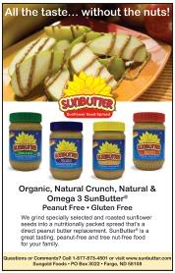 As an example, xylitol-sweetened snacks won’t cause blood sugar spikes with resultant energy lows—a fantastic feature for any teacher who has experienced any sugared classroom chaos after a cupcake craze. Additionally, says Craig of Xlear, “Since the xylitol is so healthy for the teeth, kids are actually doing something good for their bodies while they snack on these products.” The Xlear Fine & Dandy Candy line includes SparX candies, small, colorful dots of 92% xylitol, but there are plans to expand to other candy products as well, says Craig.
As an example, xylitol-sweetened snacks won’t cause blood sugar spikes with resultant energy lows—a fantastic feature for any teacher who has experienced any sugared classroom chaos after a cupcake craze. Additionally, says Craig of Xlear, “Since the xylitol is so healthy for the teeth, kids are actually doing something good for their bodies while they snack on these products.” The Xlear Fine & Dandy Candy line includes SparX candies, small, colorful dots of 92% xylitol, but there are plans to expand to other candy products as well, says Craig.
Other tasty treats that give kiddies and teachers something to smile about include Eagan, MN-based French Meadow Bakery’s “portfolio” of certified gluten-free products that are also peanut free, lactose and casein free. According to Beth Naffziger, marketing manager for the company, “These all-natural, gluten-free brownies and cookies are an excellent choice for parents and retailers; they are individually wrapped for convenience and to avoid cross-contamination.” The company also offers its low-glycemic certified Daily Bread, which is whole grain bread topped with chia seeds for an extra dose of fiber, protein and omegas in kids’ sandwiches.
Lunchbox Essentials
A hearty, healthy sandwich is a moot point when paired with a bag of greasy chips, candy, preserved cakes and soda. “Retailers need to promote smaller serving sizes, portion control and more plant-based, low-cholesterol, protein diets for students. Real foods that are higher in fiber and protein will keep students fuller for longer periods of time,” says Lortie of Justin’s Nut Butter.
Fruits and veggies are great sources of vitamins, minerals, fiber and antioxidants. Parents can easily toss an apple or some carrot sticks into their child’s lunch box. If plain fruits and veggies are too boring for some kids, some peanut butter (for schools that allow it) for dipping, hummus or low-calorie salad dressing can spice things up a bit. Various nut butters, such as almond and cashew butter are also available for flavor variation.
|
What's Selling: Kid-Friendly Food Beverages
Southeast
Tunie’s Nutrition Center, Coral Springs, FL (15,000 ft2) HANSEN’S, Blue Sky Drinks; ANNIE’S and STRETCH ISLAND FRUIT, Fruit Snacks; IAN’S, All Frozen Meals West Country Health Vitamins, Fallon, NV (2,000 ft2) Kid-Friendly Food/Beverages: ENDANGERED SPECIES, Bug Bites Midwest By Nature, Houghton, MI (2,500 ft2) NANA’S, Oatmeal Raisin Cookies; XLEAR, SparX Xylitol Candy; R.W. KNUDSEN, Grape Juice Southwest Nueces Natural Foods, Uvalde, TX DR. SEARS, Popumz; YUMMY EARTH, Lollipops Northeast Colonial Health Food Center, Kingston, NY HANSEN’S, Water; AU’SOME, Soft & Chewy Snacks; PETER RABBIT ORGANICS, Mango, Banana and Orange |
Justin’s Nut Butter offers organic and all-natural peanut and almond butters in fun, handy squeeze packs in 1.15-oz and 0.6-oz sizes. “The nutritional benefits of organic/natural nut butters partnered with the convenience of a squeeze pack make this an ideal school snack,” says Lortie.
Also, when lunch boxes are repeatedly returned with tattered and rejected fruit, tasty and nutritious fruit snacks are a great option. “CLIF Kid always recommends eating whole foods, such as fruits, first,” says Yun. But when the tough gets going, items such as CLIF Kid Organic Twisted Fruit, a tangy, chewy fruit snack, is available instead.
Some even believe fruit snacks can be a better option than fresh fruit. “Right now, there is so much concern about the spreading of germs or spoilage of produce and possible contamination. Being a parent myself, I appreciate things that can be done to minimize these concerns. Being able to provide a good-quality fruit snack ensures that my child would be getting the nutrition, without having to worry about washing the produce, protecting it from bruising or possible contamination. Additionally, I know that it will have a longer shelf life,” says Craig.
Fruit snacks also offer an element of fun for children that often can’t be found in regular “fruit-shaped fruit.” Fruit snacks are often in animal shapes, and have surprising textures and interesting flavor combinations.
For example, says Allison Fowler, senior brand manager for Stretch Island Fruit Company, Allyn, WA, the company “created FruitaBü Smooshed Fruit Rolls as an easy way for kids to enjoy a whole-serving of real fruit in a delicious, nutritious and portable snack treat.” The rolls are 95% certified organic, contain nothing artificial and, of course, anything “smooshed” has got to be kid pleasing. “Further,” says Brennan, “manufacturers and retailers listened to parents’ complaints about the high sugar content related to these snacks, so there are many low-sugar, high-calcium and vitamin C-enriched snack options now. Some fruit snacks even have a greater health benefit than a single serving of fresh fruit.”
But, says Lortie of Justin’s Nut Butter, “When a student does not have a fresh food choice and a fruit snack is the best available option, please kid, don’t buy a Mars bar!”
Beverages also are essential elements for a complete lunchbox meal, as they are important for tots to keep hydrated. Juice boxes are always popular because they are flavorful, portable and fun, but they may also contain a higher amount of sugar and calories than is desirable when considering the full tally of a complete day’s worth of eating and drinking. There are several options available, including teas, lemonades and flavored waters.
Thomas Arndt, founder of Y Water, Los Angeles, CA, says, “Y Water is an organic, nutrient-rich, low-calorie children’s beverage. Y Water uses only USDA-certified organic ingredients and meets the FDA low calorie standard with only 40 calories per nine ounce bottle.” These molecule-shaped water drinks are 100% recyclable, and can double as a toy, or better, says Arndt, as a creative developmental aid. “Y Knots are connectors that turn empty bottles into Y Toys, inspiring creativity in children. Our unique packaging and labeling is designed to make the product fun for children, ensuring adequate hydration, vitamin and mineral intake,” says Arndt.
Why not just send the kiddies to the water fountain? Several reasons. “Particularly in school environments, water fountains can grow bacteria and may not be sanitary, and so a personal-size water drink or juice boxes are preferable,” says Arndt. Also, if children sip at their discretion, it is more difficult to monitor daily fluid intake.
 To ensure that kids continue to have trust in the lunch box, something fun should be included too. Besides, kids need a treat now and then!
To ensure that kids continue to have trust in the lunch box, something fun should be included too. Besides, kids need a treat now and then!
So, what’s more fun for kids than animals? Helping animals by eating cookies! Hyannis, MA-based Late July Organic Snacks recently introduced its line of organic Mini Endangered Animal Sandwich Cookies, which feature eight grams of whole grains and 10% of the daily recommended value of calcium per serving with a different animal on each cookie. Late July has partnered with the Jane Goodall Institute to donate 10% of the profits from cookie sales and promote its Roots and Shoots program. Nicole Dawes, COO of Late July, says the cookies were designed with the help of her own two young sons—so they must be kid friendly!
Other enticing treats for little hands include Snikiddy Snacks’ Cheese Puffs in fun flavors for kids: Grilled Cheese, Mac n’ Cheese, Pizza and Nacho Cheese—so kids don’t realize they are eating something with 30% less fat than other leading brands, with 20% fewer calories as well, says Schulman.
Also, Popumz from Dr. Sears America’s Pediatrician are a fun way for kids to get some extra omega-3 DHA and EPA and whole grains in convenient single serve, grab-and-go bags that come in a variety of flavors.
Craig notes, “Helping parents and children realize that there are good-tasting alternatives to the high fat, high sugar or high fructose corn syrup sweetened products is a crucial first step.”
Snack bars are also a way to ensure that persnickety kids get a lot of nutrition in one small, tasty package. Some kids are just not interested in eating, because they get so excited about the day’s activities or just haven’t developed an appetite yet. “Snack foods offer convenience to help both parents and kids. However, snack foods that are made for the entire family often are not nutritionally appropriate or portion-sized for kids,” says Yun. “That’s why we created Clif Kid. We use only wholesome, USDA-certified organic and all-natural ingredients, with more of the nutrients that growing bodies need most, while still offering the taste, flavors and fun kids crave.” CLIF offers CLIF Kid Organic ZBaR, a baked, whole grain, energy snack bar.
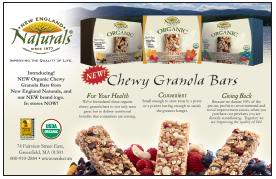 Meal Planning
Meal Planning
Perhaps the trickiest part of packing a healthy lunch is doing so consistently. “Nutrition isn’t just about what you put in your kids’ bodies, but also what you keep out. Retailers can help parents and kids by recommending food, such as CLIF Kid, that do not contain trans fats; high-fructose corn syrup; artificial colors, flavors, sweeteners or preservatives; nor ingredients sourced from genetically-modified foods,” says Yun. Understandably, sometimes the day gets away from us and kids might end up with a few dollars to spend in the cafeteria at their discretion (French fries, candy!), rather than bringing a wholesome lunch with them.
Planning ahead is essential. Retailers can help parents out by providing weekly lunch menus or even a lunch box section in their store, with packable products placed conveniently together. “Rarely would parents have the time to go through a health food store and read each of the labels on all of the products in the store to see which ones would meet all of the requirements. By bringing the products together, either in a point of purchase display or in the way of an information sheet, retailers can do a lot of the initial legwork for parents,” says Craig.
Dawes of Late July notes that the addition of a specific kids’ aisle in her local retail store has been “a very positive addition” to her own shopping trips.
 As another solution for time-management problems, many companies offer pre-packaged healthy lunches. Retailers can partner up with these companies, or better yet, retailers can create their own pre-packed lunch program. Delivery services may not be feasible for some, but smaller retailers will be able to custom tailor their program to individual customers.
As another solution for time-management problems, many companies offer pre-packaged healthy lunches. Retailers can partner up with these companies, or better yet, retailers can create their own pre-packed lunch program. Delivery services may not be feasible for some, but smaller retailers will be able to custom tailor their program to individual customers.
Also, says Dawes, “A major challenge is to get kids to take a chance on a new item.” In-store tastings of new and exciting products for kids will ensure that lunchboxes come home empty, and kids come home with full and happy bellies. WF
References
- USDA National School Lunch Program Fact Sheet, July 2008, www.fns.usda.gov/cnd/Lunch/AboutLunch/NSLPFactSheet.pdf, accessed June 17, 2009.
- V. Iannelli, “Healthy School Lunches: What do your kids eat at school for lunch?” www.pediatrics.about.com/cs/nutrition/a/school_lunches.htm, accessed June 15, 2009.
- D. Hesse, et al.,“Barriers and Opportunities Related to Whole Grain Foods in Minnesota School Foodservice,” www.schoolnutrition.org/Content.aspx?id=12511, accessed June 17, 2009.
Published in WholeFoods Magazine, August 2009

